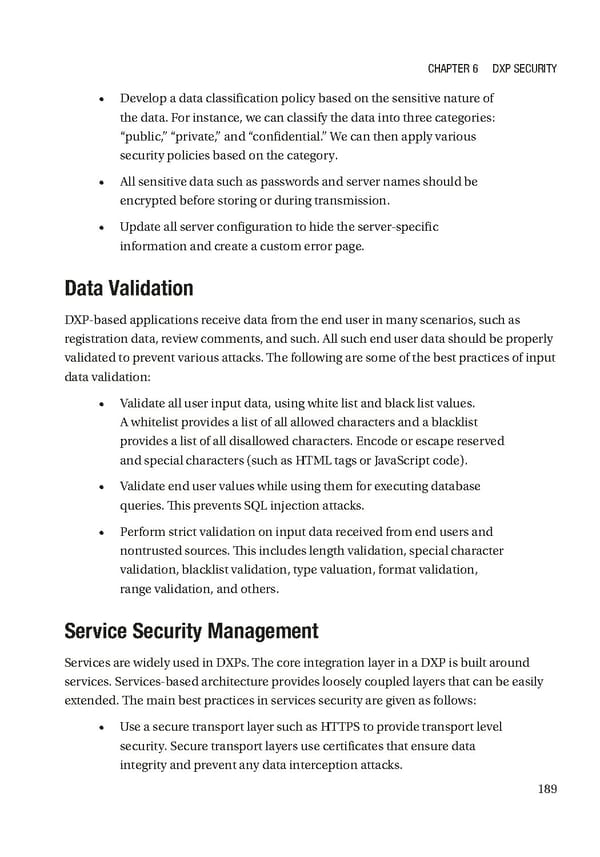Chapter 6 DXp SeCurity • Develop a data classification policy based on the sensitive nature of the data. For instance, we can classify the data into three categories: “public,” “private,” and “confidential.” We can then apply various security policies based on the category. • All sensitive data such as passwords and server names should be encrypted before storing or during transmission. • Update all server configuration to hide the server-specific information and create a custom error page. Data Validation DXP-based applications receive data from the end user in many scenarios, such as registration data, review comments, and such. All such end user data should be properly validated to prevent various attacks. The following are some of the best practices of input data validation: • Validate all user input data, using white list and black list values. A whitelist provides a list of all allowed characters and a blacklist provides a list of all disallowed characters. Encode or escape reserved and special characters (such as HTML tags or JavaScript code). • Validate end user values while using them for executing database queries. This prevents SQL injection attacks. • Perform strict validation on input data received from end users and nontrusted sources. This includes length validation, special character validation, blacklist validation, type valuation, format validation, range validation, and others. Service Security Management Services are widely used in DXPs. The core integration layer in a DXP is built around services. Services-based architecture provides loosely coupled layers that can be easily extended. The main best practices in services security are given as follows: • Use a secure transport layer such as HTTPS to provide transport level security. Secure transport layers use certificates that ensure data integrity and prevent any data interception attacks. 189
 Building Digital Experience Platforms Page 203 Page 205
Building Digital Experience Platforms Page 203 Page 205